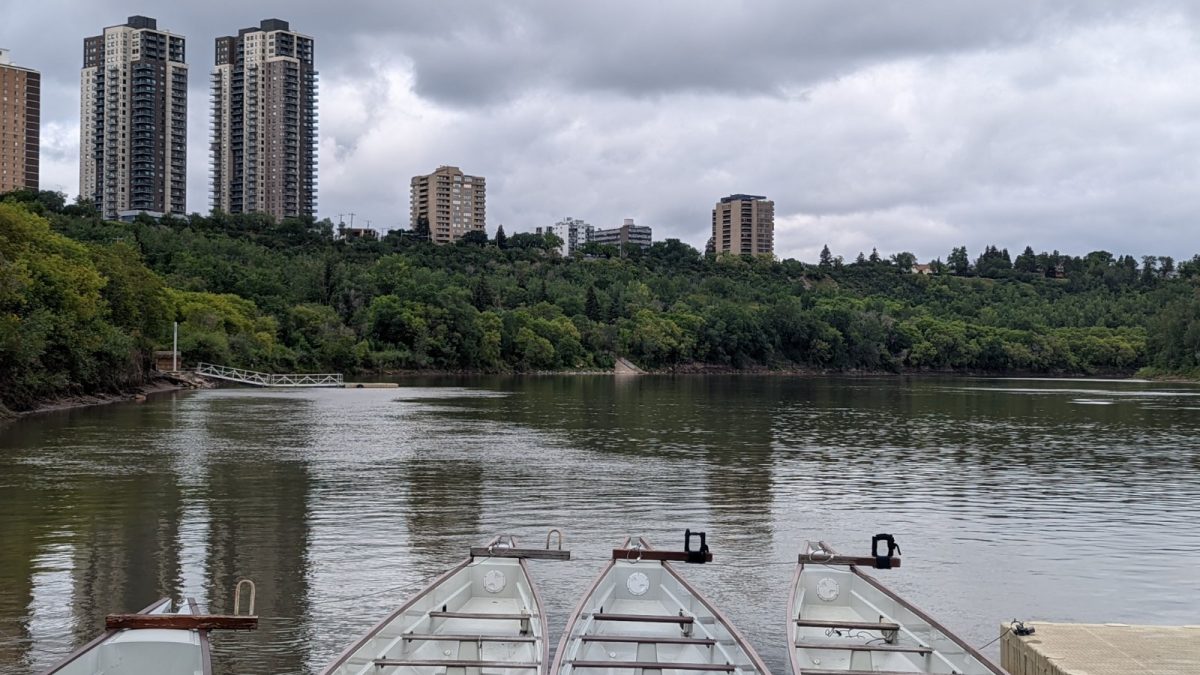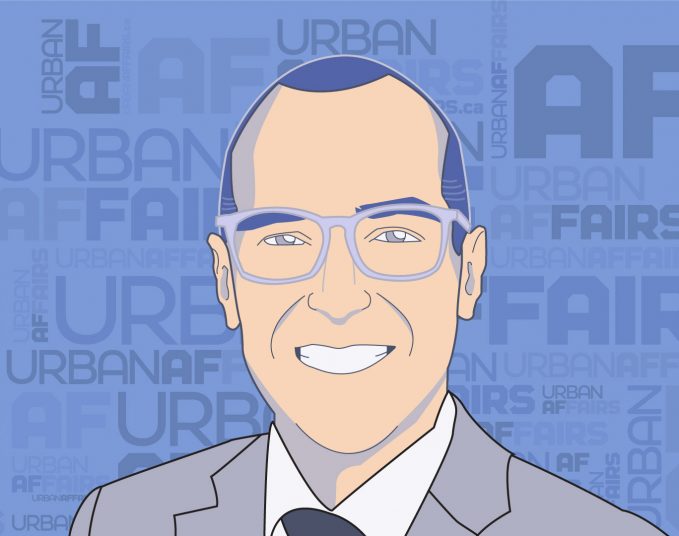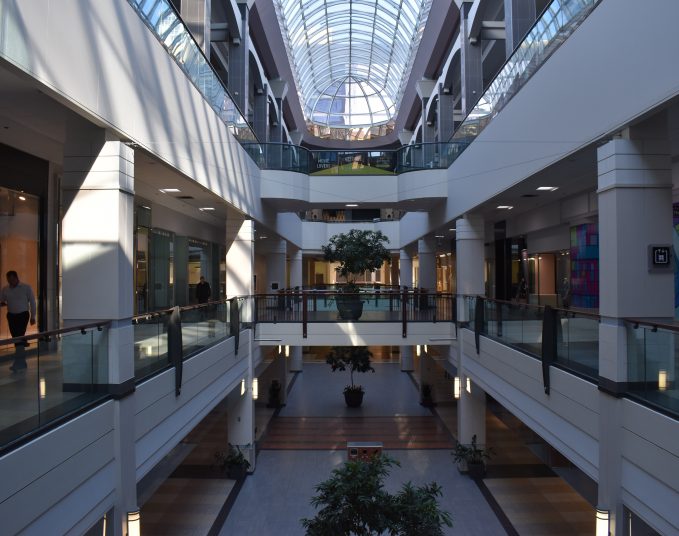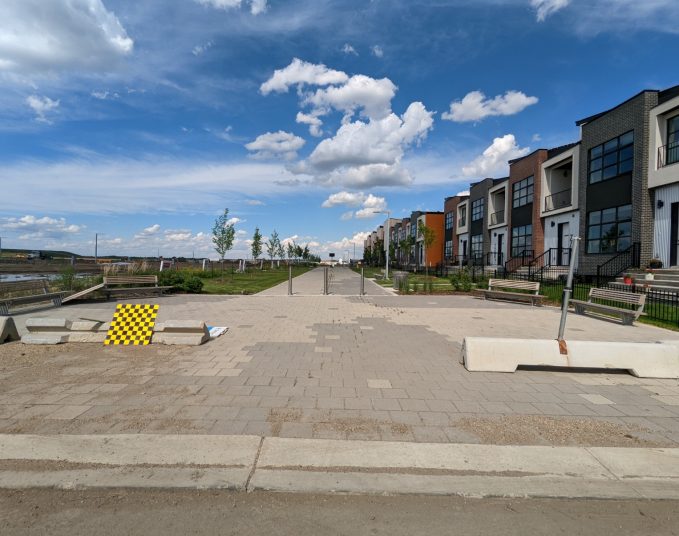There is a fairly broad consensus that Edmonton’s river valley is a gem — good for our health and well-being, good for wildlife and good for the environment. But with the first steps now underway in the process to potentially designate it a national urban park, questions are arising over what this means for Edmonton’s beloved space and the people and creatures who make use of it.
The river valley “is one of the best assets that our city and our province has,” says Randy Boissonnault, MP for Edmonton Centre and Federal Minister of Tourism. “I can’t wait to be able to talk about and promote the urban national park here in Edmonton.”
Boissonnault was in Edmonton March 14 to announce that Parks Canada and partners were exploring the creation of a national urban park in the city, beginning with a “pre-feasibility phase.” He was joined by Mayor Amarjeet Sohi, Chief Tony Alexis of the Alexis Nakota Sioux Nation, representing the Confederacy of Treaty Six First Nations, and Audrey Poitras, president of the Métis Nation of Alberta.
This announcement followed the federal government’s commitment in August 2021 of $130 million to create a network of national urban parks. In January 2022, Parks Canada and the City of Edmonton signed a statement of collaboration, indicating their mutual interest in creating a new park. Such statements have also been signed with the Meewasin Valley Authority in Saskatchewan and the municipalities of Winnipeg, Halifax and Windsor, and urban park plans are also beginning in Colwood, B.C., and Montreal.
In Edmonton, while the river valley wasn’t specifically mentioned — “no site for a National Urban Park in Edmonton has been selected, and Edmonton is under no obligation to establish the park,” states the city’s website — talk to anyone involved and the river valley is unanimously mentioned. That’s led to some concerns about the possibility of a cost being introduced to visit the river valley, like there is for national parks, and about restrictions being placed on activities such as mountain biking and e-biking. People are also worried about unintended consequences from more visitors, and who – Ottawa or Edmonton – will call the shots going forward.
“I don’t see anybody needing to get an urban park pass to go walk into the river valley,” Boissonnault says. “That would be silly.” Mayor Sohi, who raised the idea of creating a national urban park during his campaign as part of his environmental and climate policy, agrees. “And no, you will never need to pay to access it,” he wrote in a Medium post addressing concerns after the March announcement. (The City of Edmonton declined an interview request for this story, citing no significant updates at this time.)
Those worries, however, point to broader confusion over the distinction between a national park and a national urban park. “National urban parks are a new thing in Canada,” says Kecia Kerr, executive director of the northern Alberta chapter of the Canadian Parks and Wilderness Society (CPAWS). “We only have one so far.” Kerr says that one, the Rouge National Urban Park in Toronto, is a good opportunity for Canadians living in that city to connect to nature while also increasing the conservation values, biodiversity and climate benefits of the region. CPAWS supports the proposal for a national urban park in Edmonton, and is involved in the project as a stakeholder.
Kerr says Edmonton’s river valley does not have the protections many residents believe it has. “Even though it’s considered to be one of the largest green spaces in North America, it’s not a protected area, it’s not a park,” she says. “It has minimal protections through bylaws under the City of Edmonton.”
A national urban park designation could mean federal protections for the river valley, says Boissonnault. It could also mean adding signage in English, French and Indigenous languages and jobs for park interpreters. “It literally is making the river valley come alive in a way that we haven’t even thought of before,” he says. Sohi has said the designation would allow Edmonton to access federal funds to improve the area, from tackling erosion to upgrading public facilities and creating educational programs.
Parks Canada describes the National Urban Parks Program as the “next step” for the agency, which has a 110-year history overseeing a system of 48 national parks and national park reserves across the country. “New national urban parks will help protect biodiversity, support climate resilience, connect people to nature, improve mental health and wellness, promote cultural heritage, and increase social inclusion,” Parks Canada said in a statement. “They will also provide opportunities to support reconciliation with Indigenous populations in urban centres.” The parks will be managed under a range of “flexible governance models,” which could include partnerships between municipal, provincial and Indigenous governments or other organizations.
How these parks are established is also expected to be markedly different from the creation of Canada’s existing national parks, some of which have a grim history of displacing Indigenous people from traditional territories, banning them from harvesting plants and animals and disconnecting them from the land. In Alberta, the establishment of numerous national parks, including Jasper, Banff and Wood Buffalo, involved the removal of Indigenous peoples.
The Dark Side of National Parks
Athabasca Chipewyan First Nation member Leslie Wiltzen’s great-great grandparents were among many people forced from their homes to create Canada’s largest park, Wood Buffalo National Park, which spans northeastern Alberta and the southern Northwest Territories. “As a kid, growing up in Fort Chip, we were always scared to go out to the park,” Wiltzen says. “All our ties were severed when our families were removed from the park.”
A report released last summer detailed the violent history of exclusion and displacement used to create the park in 1922 and expand it in 1926. Those events had significant and damaging impacts on families and the community as a whole, which are still experienced to this day, the report concluded.
The First Nation has asked for a formal apology, but Wiltzen says they’re still waiting. He says he spent years working as a park warden in Wood Buffalo National Park, in hopes of making change from the inside, and he has mixed feelings about the creation of new national urban parks. “The intentions are good, as long as the consent of the Indigenous peoples are sought and given,” he says. “But I get mixed feelings. It’s hard to allow something to happen when you know the past wrongdoings have never been corrected.”
Back in Edmonton, Boissonnault sees the involvement of the Alexis Nakota Sioux Nation and the Métis Nation of Alberta as indicative of how this park will be built differently. He says he’s working with Steven Guilbeault, the environment and climate change minister who is also responsible for Parks Canada, to work with Indigenous partners to “re-indigenize” other national parks.
In a statement, Parks Canada said Indigenous partners and the three levels of government are meeting monthly to discuss aspects of the proposed Edmonton park. “Parks Canada is committed to working closely with the Confederacy of Treaty Six First Nations and Métis Nation of Alberta in the Edmonton region to promote and advance Indigenous interests,” the agency said. Organizations and individuals with relevant knowledge and interest in the park also meet on a monthly basis, according to the agency, to share knowledge on accessibility, geography, recreation and cultural heritage.
The pre-feasibility phase is expected to last about five years, a timeline Boissonnault would like to accelerate, “but we have to let all of the people around the table have their say and build a plan that’s going to work for everybody,” he says.
For Kerr, with CPAWS, the possibility of a future national urban park is exciting. The big dream, she says, is to eventually have protected green spaces throughout the North Saskatchewan River Valley, spanning beyond the city’s boundaries, to surrounding areas like Devon and Fort Saskatchewan.
“This is taking the jewel, this treasure that we have in the river valley,” she says, “and ensuring that it is there for future generations as a green space, and that we add to that rather than allow it to continue to get chipped away.”
Savvy AF. Blunt AF. Edmonton AF.




